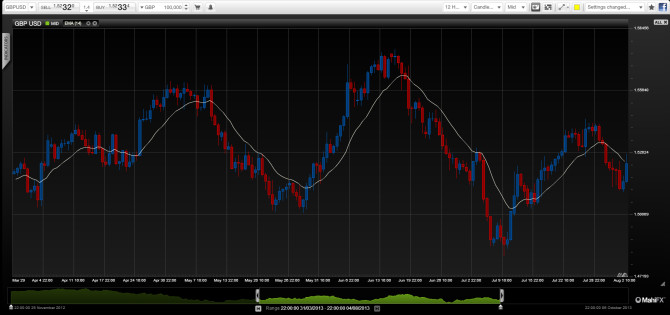Given the US Federal Reserve’s focus on jobs creation as a key metric governing the pace of its quantitative easing measures it was not surprising that a weaker-than anticipated number caused a sell-off in USD. However, signs are the US economy is doing far better than many of its rivals suggesting an end to the USD’s rally is not yet over.
Forex markets were anticipating a non-farm payrolls number of 180,000-210,000 with plenty of USD longs ahead of its release. In the end it was a much more modest 162,000 leaving the bulls disappointed. But that was just one piece of data, albeit an important one.
By Justin Pugsley, Markets Analyst MahiFX Follow MahiFX on twitter at: https://twitter.com/MahiFX
Other measure for the US economy are encouraging despite sequestration. The US real estate market is recovering and the Institute for Supply Management said its index of factory activity shot up to 55.4 in July, up from 50.9 in June. Q2 US GDP growth registered a better than expected annualised growth rate of 1.7% and 2012 growth was revised up to 2.8% from 2.2%.
It is also worth noting that jobs numbers tend to be a lagging indicator. So if the US continues recovering the jobs numbers are likely to follow suggesting that some US NFP numbers could be quite strong in the months ahead.
GBP/USD chart

Real interest rates are a threat to growth
A strengthening recovery should therefore lead to the Fed’s quantitative easing programme being gradually phased out – strongly supportive for USD. Nonetheless, it doesn’t come without considerable risks, which central bankers are well aware of.
Though not particularly new, but nonetheless catching on with central bankers, is providing long-term forward guidance on interest rates. By stating that they will remain low for many years should help reduce the very likely growth sapping rises in ‘real’ interest rates paid by businesses and households as QE is withdrawn. If central bankers can manage that transition without damaging the economy, they will have pulled off quite a stunt.
But for the time being at least the US remains one of the more attractive economies as does the USD in terms of currencies. Most of Europe’s economies still have a lot of catching up to do in terms of matching US growth, China is going through a self-imposed cleansing process to rid speculative excesses and Japan has only just embarked on its own monetary experiment, which could still go very wrong.
Further reading: Worsening Eurozone debt levels could see September Euro sell-off
